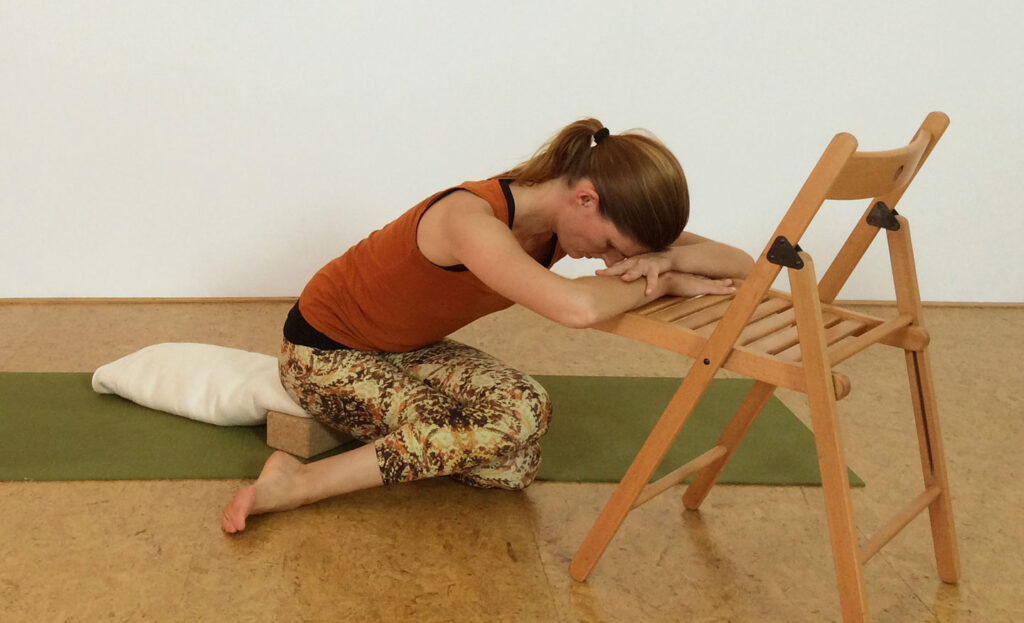How to practice
Shoelace:
There are different ways to get into this pose, I’ll describe the one that works best for me. Come to hands and knees and place the block(s) between your ankles. You can add a blanket on top to soften the seat a bit. Bring both lower legs to the right of the blocks. Cross the whole right leg behind the left, so that the right knee is behind the left. The left foot ends up on the right side and the right foot on the left of the blocks. Slowly bring your sitting bones towards the blocks, leading with the left sittingbone. The pelvis and spine stay more level when you lead with the left sittingbone.
Make sure that when you find your seat on the block(s) the knees are still resting on top of each other. If they are not, elevate your seat by adding a block or blanket until your legs can be relaxed with knees touching, while you’re in the pose. If this is uncomfortable for the knees, come out of it and you can practice pretzel pose.

